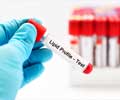Experiments on mice conducted at UT Southwestern Medical Center suggest that immature fat cells may play a crucial role in treating obesity.
Experiments on mice conducted at UT Southwestern Medical Center suggest that immature fat cells may play a crucial role in treating obesity.
The researchers have discovered that such cells lurk in the walls of the blood vessels that nourish fatty tissue, just waiting for excess calories to help them grow into the adult monsters responsible for packing on the extra pounds.While scientists have long known immature fat cells are located near blood vessels, this is the first time a study has shown exactly where they exist.
The researchers say that finding the existence, identity and lair of such cells may direct future research to find ways to them from creating undesired fat.
According to them, immature cells may also be used for such clinical treatments as filling in a woman's breast after a lumpectomy.
"There's both intellectual and clinical importance in this discovery. Identifying the progenitor cells and finding where they live gives us an exciting therapeutic opportunity," said Dr. Jonathan Graff, associate professor of developmental biology and molecular biology at UT Southwestern and senior author of the study, which appears in today's online edition of the journal Science.
"Since we can now isolate the progenitor cells, we can interrogate them molecularly and gain insight not only into how they function but also how to harness their powers to help in a variety of human conditions. And because we have found their location, we might be able to develop therapies that can help people with obesity, diabetes or other metabolic challenges," the researcher added.
Advertisement
Such therapies may be beneficial particularly to soldiers, for progenitor fat cells from their bellies or thighs could be moved to their wounds. The approach may also be helpful in treating scars from breast cancer surgery.
Advertisement
They found that the progenitor cells were embedded within the walls of the blood vessels that run through fat tissue.
"They're not just attached to the vessel wall, they're an integral part of it," Dr. Graff said.
He said that such an arrangement is crucial to the cells' interaction with the nutrients present in the blood after a meal, such as glucose.
When they sense excess caloric intake, they drift out of the vessel walls and mature into fat cells, ensuring that they reside in the appropriate location among other fat cells.
The green glow also allowed the researchers to separate the progenitor cells from other cells using a technique that isolates only the glowing cells.
Later, the team grew the cells in culture to analyse some of their properties, and observed that the progenitor cells has a distinct set of molecules on the surface, which could allow the cells to be isolated easily for transplant or study.
In their future research, the researchers hope to characterize the cells more fully and to isolate the progenitors just by removing unwanted fat, so that they could be moved to other locations in the same person for reconstructive purposes, to treat a variety of diseases, and also paradoxically to treat obesity and diabetes.
Source-ANI
SRM














